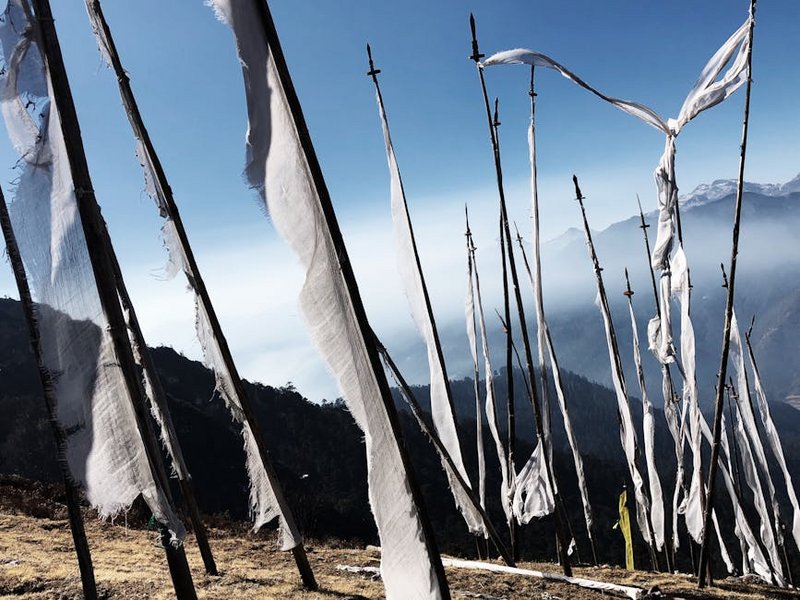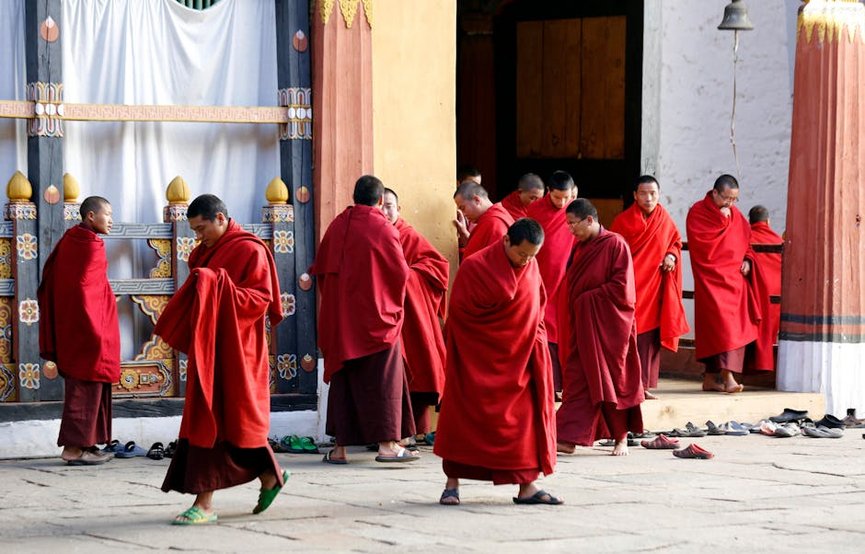Bhutan Paro Taktsang Monastery Hike: A Spiritual Himalayan Adventure
Embarking on the Bhutan Paro Taktsang Monastery hike immerses you in dramatic Himalayan landscapes where ancient spiritual traditions meet breathtaking natural beauty. This iconic trek ascends 900 meters through pine forests to a 17th-century monastery clinging to cliffs above Paro Valley. Your journey covers essential planning, cultural insights, and practical tips for this unforgettable pilgrimage.
Essential Taktsang Monastery Information
Paro Taktsang, known as Tiger’s Nest, dates to 1692 built around the cave where Guru Rinpoche meditated in the 8th century. The monastery complex houses four main temples and several residential buildings precariously positioned 3,120 meters above sea level. Bhutan’s government carefully preserves this sacred site through visitor limits and preservation initiatives.
Located 10 kilometers north of Paro town, the hike begins at the base parking area accessible via paved roads from Paro International Airport. Morning start times between 8-9 AM help avoid afternoon cloud cover while maximizing photography opportunities in soft morning light. The round-trip journey typically requires 4-6 hours depending on fitness and time spent at the monastery.
Historical Significance and Legends
Understanding the spiritual context enriches your hiking experience significantly.
- Guru Rinpoche allegedly flew to the cave on a tigress’s back, giving Tiger’s Nest its name and establishing Buddhism in Bhutan during the 8th century.
- The original temple construction in 1692 by Gyalse Tenzin Rabgye commemorated this sacred site, with reconstruction following a 1998 fire maintaining traditional architecture.
- Pilgrims have visited for centuries seeking blessings, with the hike representing metaphorical enlightenment through physical challenge and spiritual reflection.
- Budget tours at $200-250 daily cover standard hotels, all meals, transport, and guide services with Taktsang permits included in this mandatory minimum fee structure.
- Mid-range options from $300-400 upgrade accommodations to 3-4 star hotels with enhanced meal options and additional cultural experiences beyond standard itineraries.
- Luxury experiences costing $500+ provide 5-star lodging, private vehicle transfers, specialized guides, and exclusive access to certain cultural sites with premium amenities throughout.
- Bhutan Tourism Council
- Lonely Planet Bhutan Travel Guide
Physical Requirements and Difficulty
This moderate-to-strenuous hike demands reasonable fitness with steep sections gaining 600 meters elevation before descending to the monastery entrance. The well-maintained path includes stone steps and dirt trails with handrails at exposed sections. Acclimatization to Paro’s 2,200-meter altitude proves essential before attempting the climb.
Hikers should prepare for variable weather conditions that change rapidly in mountain environments. Carry layered clothing for temperatures ranging from 5°C to 20°C (41°F to 68°F) during hiking months. Sturdy footwear with ankle support prevents injuries on uneven terrain during the descent.
Permits and Entry Requirements
All visitors must arrange Bhutan travel through licensed tour operators who handle the $200 daily tariff covering accommodation, meals, and guide services. Your operator secures the Taktsang entry permit included in this fee, with no additional monastery entrance charge. Present your passport at the checkpoint where officials verify permits before allowing ascent.
Bhutan’s tourism policy requires guided visits for international travelers, ensuring cultural respect and safety throughout your experience. The mandatory guide provides historical context and monitors your pace while assisting with any altitude-related issues. This system preserves the site’s sanctity while supporting local employment.

Alt: “paro-taktsang-monastery-himalayan-cliffside-architecture”
Planning Your Bhutan Paro Taktsang Monastery Hike
Successful Bhutan Paro Taktsang Monastery hike preparation involves strategic timing, budget allocation, and physical conditioning for high-altitude trekking. March through May offers optimal conditions with blooming rhododendrons and clear skies before monsoon clouds arrive in June. September to November provides equally favorable weather with crisp air and excellent visibility across Himalayan peaks.
Budget approximately $250-350 daily through all-inclusive tour operators covering accommodations, meals, transport, and guide services. The mandatory daily tariff includes sustainable tourism fees supporting Bhutan’s development and conservation efforts. Additional costs might include souvenirs, drinks, and optional pony rides for sections of the trail.
Physical preparation should begin 2-3 months before travel with cardiovascular exercise and leg strengthening routines. Practice hiking with elevation gain similar to Taktsang’s 600-meter ascent if possible. Altitude acclimatization in Paro for 1-2 days before attempting the climb reduces adjustment issues.
Best Time to Visit Paro Taktsang
Visit between March and May for comfortable temperatures ranging from 10°C to 25°C (50°F to 77°F) with minimal rainfall and spectacular spring blossoms. These months offer the clearest views of Jomolhari and other Himalayan peaks visible from the trail. September through November provides similar ideal conditions with autumn foliage coloring the valleys golden.
Winter months from December to February bring colder conditions with temperatures between -5°C and 15°C (23°F to 59°F) and possible trail closures during heavy snow. June through August constitutes monsoon season with frequent rainfall creating slippery conditions and reduced visibility. Morning starts remain essential year-round to avoid afternoon cloud cover.
Budget Planning and Costs
Tour packages include most expenses but understanding the breakdown helps planning.
Essential Preparation Checklist
Pack layered clothing including moisture-wicking base layers, insulating mid-layers, and waterproof outer shells for changeable mountain weather. Break-in sturdy hiking boots with ankle support and good traction for uneven stone steps and potentially muddy sections. Trekking poles reduce knee strain during the descent while a daypack carries water, snacks, and extra layers.
Carry your passport and permit documents at all checkpoints along with sufficient local currency (Ngultrum) for souvenir purchases at the monastery shop. Book through licensed operators 3-4 months ahead for peak season visits securing preferred guides and accommodations. Travel insurance covering high-altitude trekking and emergency evacuation provides essential protection.
Top Attractions and Monastery Experiences
The Tiger’s Nest monastery complex features multiple prayer halls, meditation caves, and breathtaking viewpoints across Paro Valley. The main temple contains elaborate murals depicting Buddhist teachings and statues of Guru Rinpoche and other important figures. Visitors can observe monks performing daily rituals while absorbing the profound spiritual atmosphere.
Beyond the monastery itself, the hiking trail offers numerous photographic opportunities with prayer-flag-dotted ridges and panoramic valley views. Several rest points along the route provide benches and viewing platforms ideal for catching your breath while appreciating the scenery. The halfway cafeteria serves refreshments with an outstanding perspective of the monastery across the gorge.
Must-See Highlights
The main temple’s inner sanctum houses the original meditation cave where Guru Rinpoche achieved enlightenment, accessible via narrow passages behind the altar. Intricate wall paintings throughout the complex illustrate Buddhist parables and historical events using traditional mineral pigments. The upper levels provide the most dramatic cliffside perspectives directly above the 900-meter drop.
The prayer wheel courtyard near the entrance offers cultural immersion opportunities where visitors can join locals in clockwise circumambulation. The monastery’s upper viewpoint delivers unparalleled photographic compositions with prayer flags framing the architecture against distant snow-capped peaks. Time your visit between 10 AM and 2 PM when interior temples typically open to visitors.
Hidden Gems and Local Favorites
Few visitors discover the secondary path leading to Ugyen Tsemo Monastery above Taktsang, adding 45 minutes but providing even more spectacular views. Local guides know secluded viewpoints along the main trail where you can enjoy moments of solitude away from the primary tourist path. The forest section before the final descent contains ancient meditation caves used by hermits for centuries.
Paro Valley’s lesser-known temples like Kyichu Lhakhay offer complementary spiritual experiences with fewer visitors and equally impressive architecture. Early morning hikes starting at 6 AM provide magical light conditions and possible wildlife sightings including Himalayan pheasants and langur monkeys. Engaging with pilgrims along the trail offers authentic cultural exchange beyond standard tourist interactions.
Photography and Cultural Documentation
Respectful photography requires understanding monastery policies prohibiting pictures inside certain sanctums and during prayer ceremonies. The best exterior shots occur morning and late afternoon when sidelight accentuates the cliffside architecture and prayer flags. Wide-angle lenses capture the dramatic setting while telephoto options isolate architectural details against the mountainous backdrop.
Cultural sensitivity means asking permission before photographing monks or religious rituals, with some ceremonies allowing no documentation. The viewpoint near the cafeteria provides the classic Tiger’s Nest composition enjoyed by most visitors throughout the day. Professional photographers benefit from off-season visits when fewer tourists obscure the scenes and light remains favorable longer.
Practical Travel Information
Paro International Airport (PBH) serves as Bhutan’s primary international gateway with Druk Air and Bhutan Airlines operating flights from Bangkok, Delhi, Kathmandu, and Singapore. The airport features a single runway surrounded by mountains requiring special pilot certification for landing approaches. Most visitors arrive via these connections since no direct flights operate from Europe or North America.
Accommodation options in Paro range from traditional farmstays to luxury hotels, all booked through your tour operator as part of the mandatory package. The town center offers basic shopping, restaurants, and cultural sites within walking distance of most hotels. Evening temperatures drop significantly regardless of season, requiring warm layers for comfortable exploration.
| Accommodation Type | Features and Amenities | Price Range (USD) |
|---|---|---|
| Traditional Farmstay | Authentic Bhutanese meals, family hospitality, cultural immersion | $150-200/night |
| Standard Hotel | Private bathroom, heating, included meals, central location | $200-250/night |
| Boutique Property | Traditional architecture, enhanced amenities, cultural programs | $300-400/night |
| Luxury Resort | Spa facilities, premium dining, scenic views, personalized service | $500+/night |


